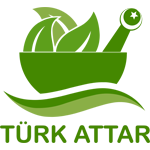
Although nodules are usually harmless, depending on these risks, they should be followed up by a physician and, if necessary, treated with medication, radioactive iodine therapy and surgery.
Thyroid Nodules
Thyroid nodules are abnormal lumps or masses of different structures and sizes that occur within the thyroid tissue. Most of them are harmless and benign.
Nodules are usually not noticed until they reach 2 cm in diameter, where they are visible to the naked eye. They carry a 5-10% risk of cancer. Thyroid nodules can be a problem on their own, or they can occur due to other diseases.
The Risks Carried by Nodules are as follows:
cancer,
Cause hyperthyroidism with excessive hormone production by working autonomously,
putting pressure on the windpipe of large ones
Although nodules are usually harmless, depending on these risks, they should be followed up by a physician and, if necessary, treated with medication, radioactive iodine therapy and surgery.
Types;
Presence of a lump in the thyroid gland indicates thyroid nodule; The presence of both large and nodular thyroid gland indicates nodular goiter, and the large size of the thyroid gland and the presence of more than one nodule indicates multi-nodular goiter.
Reasons
Nodules are one of the most common thyroid gland diseases. They are seen after the age of 40 and at a rate of 25 percent in Turkey. Iodine deficiency in drinking water and soil is an important factor in the prevalence of the disease. Therefore, thyroid nodules are common in populations with low iodine in their diet.
With the introduction of thyroid ultrasound into clinical use in recent years, nodules can be detected earlier.
In addition to iodine deficiency, non-cancerous benign growths in the thyroid gland, cysts, and inflammatory diseases of the thyroid gland such as Hashimoto's disease can also lead to nodules.
Symptoms
Symptoms of thyroid nodules are as follows;
Neck fullness and swelling
Pain and discomfort in the neck
Hoarseness or cracking of the voice
Difficulty breathing or swallowing
Diagnostic Methods
First of all, the patient's history is taken, then the doctor's physical examination and blood test (free T3, free T4, TSH, Anti-Tg, Anti-TPO) are performed.
Nodules are visualized by ultrasound method. If the risk of cancer is detected in the nodule on ultrasound, a sample can be taken by needle biopsy.
In order to detect the risk in the nodules, the patient is given a radioisotope substance intravenously and a thyroid scintigraphy is taken. If this substance is retained by the nodule, it is called 'hot', if not 'cold', and 'warm' if it remains neutral.
Cold nodules have a 5% risk of becoming cancerous.
If the nodule or nodules of the person are autonomous, that is, overworking nodules, it is necessary to prove this with T4 and TSH blood tests and to determine that the nodules are hot nodules with thyroid scintigraphy. Needle biopsy may not be needed, as hot nodules are usually not cancerous.
